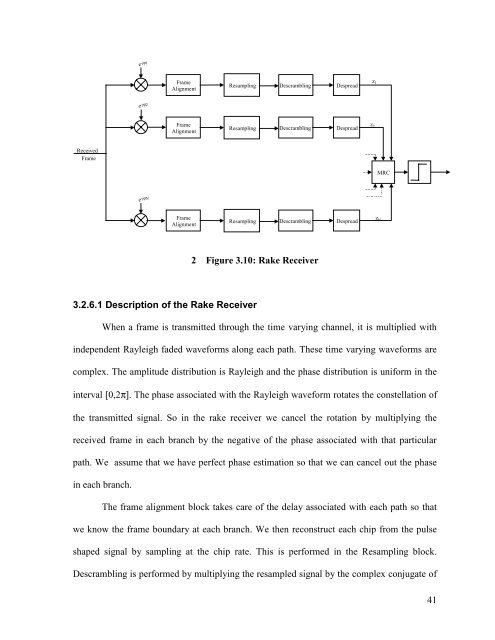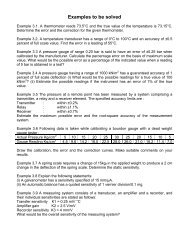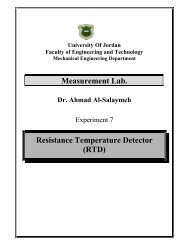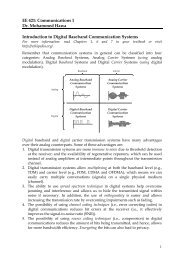Simulation of Third Generation CDMA Systems - Virginia Tech
Simulation of Third Generation CDMA Systems - Virginia Tech
Simulation of Third Generation CDMA Systems - Virginia Tech
Create successful ePaper yourself
Turn your PDF publications into a flip-book with our unique Google optimized e-Paper software.
e -jϕ1FrameAlignmentResamplingDescramblingDespreadz 1e -jϕ2FrameAlignmentResamplingDescramblingDespreadz 2ReceivedFrameMRCe -jϕNFrameAlignmentResamplingDescramblingDespreadz N2 Figure 3.10: Rake Receiver3.2.6.1 Description <strong>of</strong> the Rake ReceiverWhen a frame is transmitted through the time varying channel, it is multiplied withindependent Rayleigh faded waveforms along each path. These time varying waveforms arecomplex. The amplitude distribution is Rayleigh and the phase distribution is uniform in theinterval [0,2π]. The phase associated with the Rayleigh waveform rotates the constellation <strong>of</strong>the transmitted signal. So in the rake receiver we cancel the rotation by multiplying thereceived frame in each branch by the negative <strong>of</strong> the phase associated with that particularpath. We assume that we have perfect phase estimation so that we can cancel out the phasein each branch.The frame alignment block takes care <strong>of</strong> the delay associated with each path so thatwe know the frame boundary at each branch. We then reconstruct each chip from the pulseshaped signal by sampling at the chip rate. This is performed in the Resampling block.Descrambling is performed by multiplying the resampled signal by the complex conjugate <strong>of</strong>41
















